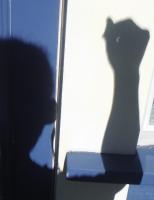Printable Version of Topic
Click here to view this topic in its original format
Unmanned Spaceflight.com _ Telescopic Observations _ Pro-Am Planetary Observations at Pic du Midi
Posted by: JRehling Jul 25 2017, 01:21 AM
Recently, a collaboration of a few professional and very talented amateurs used the 1-meter telescope at Pic du Midi to produce some truly breathtaking images of Venus and the outer planets.
Background information and images at:
https://www.cloudynights.com/topic/580395-pic-du-midi-planetary-mission/
and
http://www.europlanet-eu.org/pic-net-ground-based-images-press-release/
One example of the way this sort of data can be utilized is the "Voyager 3" project from Sweden, which used imagery from modest telescopes to monitor Jupiter over a sustained period of time.
http://www.planetary.org/multimedia/space-images/jupiter/the-voyager-3-project.html
I'd say this impacts on the topic of spaceflight to the extent that it defines the quality of imagery that can be collected on a regular basis with a telescope that is very good / large but not in the top category of size… an important distinction because the largest telescopes naturally have intense competition for their time and are used only for limited numbers of planetary images. It's conceivable that telescopes in the 1-meter class could be used to produce relatively continuous and ongoing monitoring of the planets so far as orbital positions allow. Obviously, spacecraft can always produce imagery of a significantly higher quality, but these earthbound telescopes are beginning to show the ability to approach the scientific potential of spacecraft data sets such as Cassini's imagery of Jupiter or Pioneer Venus' imagery of Venus.
Posted by: nprev Jul 25 2017, 04:10 AM
I find the Ganymede shots particularly impressive...same apparent resolution as the Voyagers a day or two before the encounters. Impressive technology.
Posted by: Explorer1 Jul 25 2017, 05:15 AM
Saw these pics a while back, but still a mighty result!
Would Io's plumes be at all plausible to resolve? I know Hubble caught them (along with Europa's plume), but its time is obviously much more limited...
Posted by: climber Jul 25 2017, 05:38 AM
Would Io's plumes be at all plausible to resolve? I know Hubble caught them (along with Europa's plume), but its time is obviously much more limited...
A while back? We're talking of june 10th this year for the one Nicolas is talking about...
Also very impressed by Ganymede details.
A bit of topic: I can see the 1m cupola telescope of Pic du Midi from my home place...70km "a vol d'oiseau"...
Posted by: JRehling Jul 25 2017, 12:25 PM
Io's plumes would perhaps be resolvable in visible light, barely, along the limb, but probably the easiest way to resolve them would be in IR, where the thermal radiation makes them stand out very clearly, and the time when they rise/set past the limbs can give you a very precise indication of their longitude, in combination with the fact that the sources don't move (very often, anyway).
Note: earthbound telescopes are utterly incapable of measuring thermal IR in the range of earthlike temperatures, because the air and telescope itself produce an overwhelming amount of noise, but for temperatures on a par with magma or even the surface of Venus, it is quite possible.
So, in a nutshell, yes, Io's volcanic activity could be monitored longterm with equipment on Earth, with gaps in coverage only where Jupiter is in solar conjunction for a fraction of the year. And it has been done:
https://www.space.com/34485-jupiter-moon-io-volcanoes-seen-from-earth.html
Posted by: JRehling Jul 25 2017, 12:27 PM
Then it can certainly see you!
That's very cool. I sometimes see the Lick Observatory from nearby San Jose, but I have yet to drive up for a visit.
Posted by: Phil Stooke Aug 21 2017, 07:31 PM
Pro-am eclipse observation with my portable pinhole projection unit (AKA my hand). Solidarity with the eclipse!
Phil
Posted by: john_s Aug 22 2017, 04:01 PM
https://www.space.com/34485-jupiter-moon-io-volcanoes-seen-from-earth.html
Just noticed and had to correct this statement- Earthbound telescopes have been routinely measuring temperatures of cold solar system objects for decades- radiation from Saturn's icy moons (surface temperature ~100 K) was detected in the 1970s, for instance. You need to be careful subtracting the radiation from the Earth's atmosphere and the telescope (usually done by observing the sky next to the target, and subtracting it), but it's perfectly possible.
John (who's been doing just that for decades)
Posted by: JRehling Aug 22 2017, 07:14 PM
Thanks hugely for the correction, John S.!
-John R.
Powered by Invision Power Board (http://www.invisionboard.com)
© Invision Power Services (http://www.invisionpower.com)

